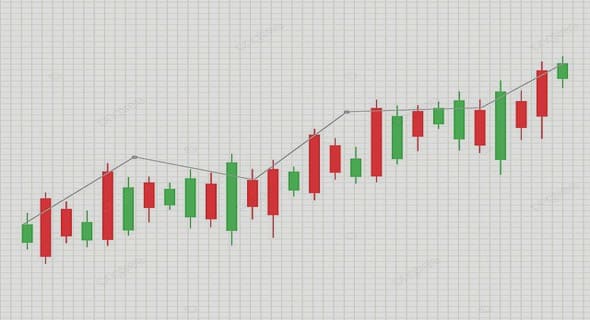(Downloads - 0)
For more info about our services contact : help@bestpfe.com
Table of contents
Introduction
1 A general introduction to topology in Condensed Matter
1.1 Kitaev’s wire
1.1.1 Generalities
1.1.2 Majorana fermions and edge states
1.1.3 Bogoliubov formalism and bulk topology
1.1.4 Quantum Ising model and locality
1.2 General band theory for non-interacting fermions
1.2.1 Single particle Hamiltonian in Fourier space
1.2.2 Two-band Hamiltonians and general solutions
1.3 Topological approach to band theory
1.3.1 Introduction to topology
1.3.2 Bulk hamiltonians and homotopy
1.3.3 Symmetry and classication
1.3.4 Relevant topological invariants for two-band Hamiltonians
1.4 Bulk-edge correspondence and edge states
1.4.1 D class for d = 1
1.4.2 BDI class for d = 1
1.4.3 D class for d = 2
1.5 Topical examples in 1D
1.5.1 The Su-Schrieer-Heeger model
1.5.2 Longer-range Kitaev’s wire
1.5.3 Rashba spin-orbit superconductors
1.6 Topical examples in 2D
1.6.1 The p + ip superconductor
1.6.2 A very brief overview of graphene
1.6.3 Haldane model for topological insulator
2 Entanglement properties of normal and topological states
2.1 Entanglement entropy
2.1.1 Denition of the von Neumann Entanglement Entropy
2.1.2 Entanglement entropy in many-body systems
2.2 Entanglement spectrum and topological systems
2.2.1 Denition of the entanglement spectrum
2.2.2 Entanglement spectrum in topological systems
2.3 Bipartite uctuations as a « weak » measure of entanglement
2.3.1 The problem of entanglement measure
2.3.2 General denition of bipartite uctuations
2.3.3 Bipartite charge uctuations in Luttinger Liquids
2.3.4 Beyond one dimension
3 Bipartite uctuations in non-interacting topological systems
3.1 Bipartite uctuations in 1D: generalities
3.1.1 Preliminaries on charge-conservation breaking
3.1.2 Bipartite uctuations in arbitrary non-interacting systems
3.1.3 The Fejer Kernel: properties and consequences
3.2 One-dimensional BDI class
3.2.1 BDI Hamiltonian and uctuations
3.2.2 Discontinuity of the derivative of the linear term
3.2.3 Logarithmic contributions and generalized uctuations
3.2.4 Conformal origin of the logarithm
3.2.5 Structure factor of the BCF
3.2.6 Bipartite uctuations in Kitaev’s model and the SSH chain
3.2.7 Bipartite uctuations in the extended Kitaev’s model
3.2.8 Extension to nite length and nite temperature
3.2.9 A brief comparison with other charge-based measurements
3.2.10 Beyond the two-band paradigm
3.3 One-dimensional D class
3.3.1 Preliminaries
3.3.2 Cusp of the linear term
3.3.3 Logarithmic coecients
3.3.4 An example: extended Kitaev model
3.4 Bipartite uctuations in 2D Dirac materials
3.4.1 Geometric shape, Kernel functions and Sobolev spaces
3.4.2 Fluctuations for a single isotropic Dirac cone
3.4.3 Beyond the single isotropic Dirac cone
4 Beyond non-interacting systems: a complex interplay
4.1 Interactions and bipartite uctuations
4.1.1 Interacting systems and numerical simulations
4.1.2 Bosonization at the critical point
4.1.3 Bipartite uctuations and interactions
4.2 Model and simple limiting cases
4.2.1 Microscopic model
4.2.2 Phase diagram
4.2.3 The Hubbard model
4.3 Close to half-lling: bosonization and RG
4.3.1 Bosonization at half-lling
4.3.2 RG analysis
4.3.3 Characterization of the 4 Majorana phase
4.3.4 Behavior of the large g phases
4.3.5 Nature of the transitions
4.4 The Double Critical Ising phase
4.4.1 Mean-eld precursor to the DCI
4.4.2 Unraveling the ladder
4.4.3 Large g model
4.4.4 Numerical approach
5 Transport in topological systems
5.1 Motivation and summary
5.1.1 Motivation
5.1.2 Summary of the main results
5.2 Model and bosonization
5.2.1 Model
5.2.2 Tunelling term and number of Majoranas
5.2.3 Bosonization and Majorana fermions
5.3 Quantum Brownian Motion and Topological Kondo model
5.3.1 Quantum Brownian Motion
5.3.2 Far from charge degeneracy: the Topological Kondo limit
5.4 Charge degeneracy point: an exact mapping to the multichannel Kondo Model
5.5 Phase diagram at charge degeneracy
Conclusion and perspectives
A Résumé en francais
B Brief summary of abbreviations
C Brief summary on Hilbert-Sobolev spaces
D Details on microscopic computations
D.1 Brillouin Zone and reciprocal lattice
D.2 Diagonalization and correlation functions of the Rashba nanowires
D.3 Schrieer-Wol transformation in Kitaev’s ladder
E Luttinger liquids, bosonization and RG
E.1 Basics of Luttinger Liquids theory
E.2 Bipartite charge uctuations of a critical c = m bosonic model
E.3 RG analysis in bosonized theories
E.3.1 Overview
E.3.2 Derivation for the sine-Gordon model
E.3.3 Beyond the simple sine-Gordon model
E.3.4 Bosonization of the Kitaev-Hubbard model
F Conformal Theory computations
F.1 Bipartite charge uctuations for a c = 1 2 model
F.2 Bipartite charge uctuations for a c = 1 boson
G Topological Kondo model
G.1.1 RG equations for the Topological Kondo model
G.1.2 RG equations for the M-CKM
G.2 Kubo approach to conductance
G.2.1 Kubo formula
G.2.2 Application for the strong coupling limit far from charge degeneracy



